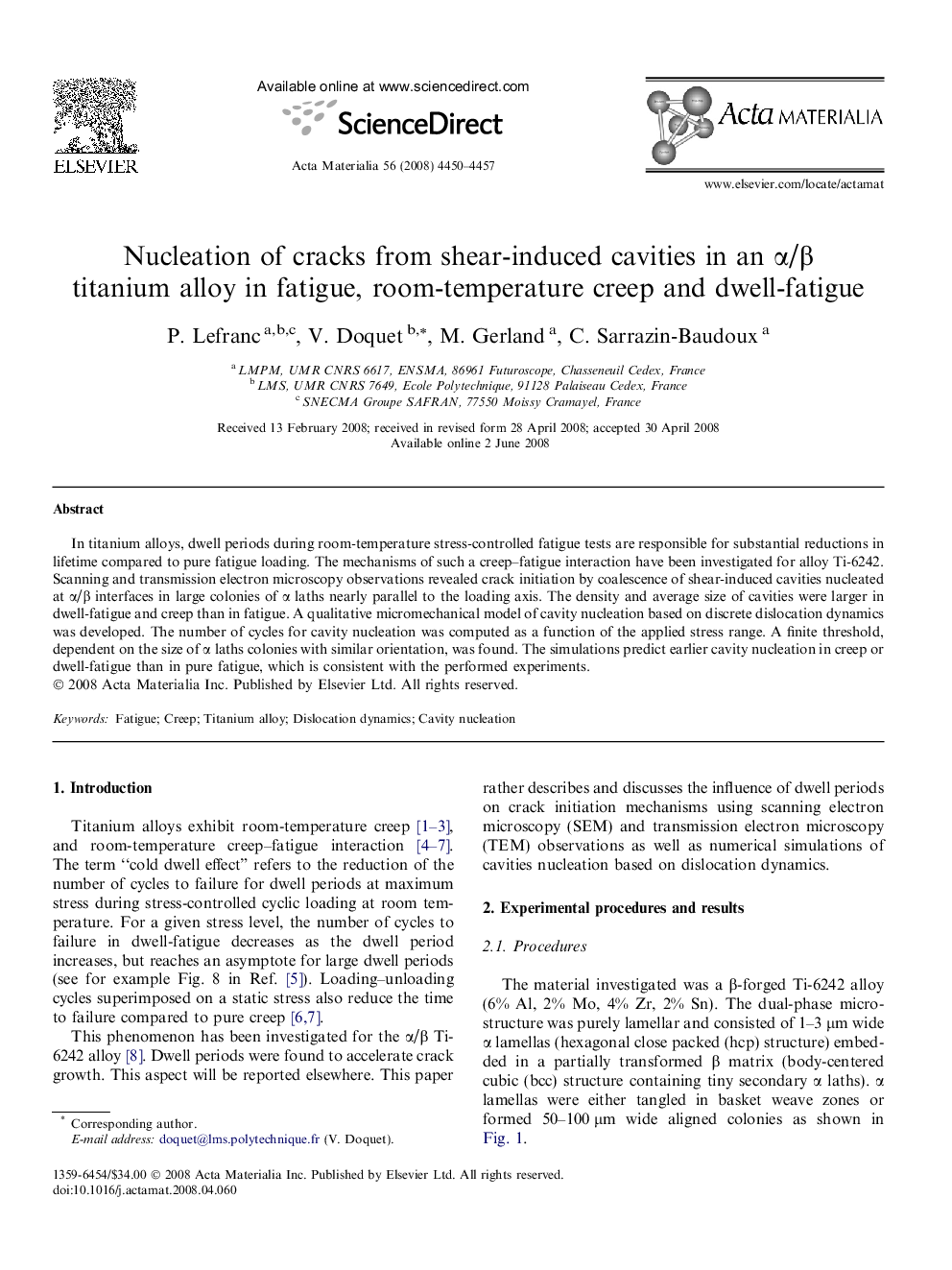| Article ID | Journal | Published Year | Pages | File Type |
|---|---|---|---|---|
| 1448366 | Acta Materialia | 2008 | 8 Pages |
In titanium alloys, dwell periods during room-temperature stress-controlled fatigue tests are responsible for substantial reductions in lifetime compared to pure fatigue loading. The mechanisms of such a creep–fatigue interaction have been investigated for alloy Ti-6242. Scanning and transmission electron microscopy observations revealed crack initiation by coalescence of shear-induced cavities nucleated at α/β interfaces in large colonies of α laths nearly parallel to the loading axis. The density and average size of cavities were larger in dwell-fatigue and creep than in fatigue. A qualitative micromechanical model of cavity nucleation based on discrete dislocation dynamics was developed. The number of cycles for cavity nucleation was computed as a function of the applied stress range. A finite threshold, dependent on the size of α laths colonies with similar orientation, was found. The simulations predict earlier cavity nucleation in creep or dwell-fatigue than in pure fatigue, which is consistent with the performed experiments.
